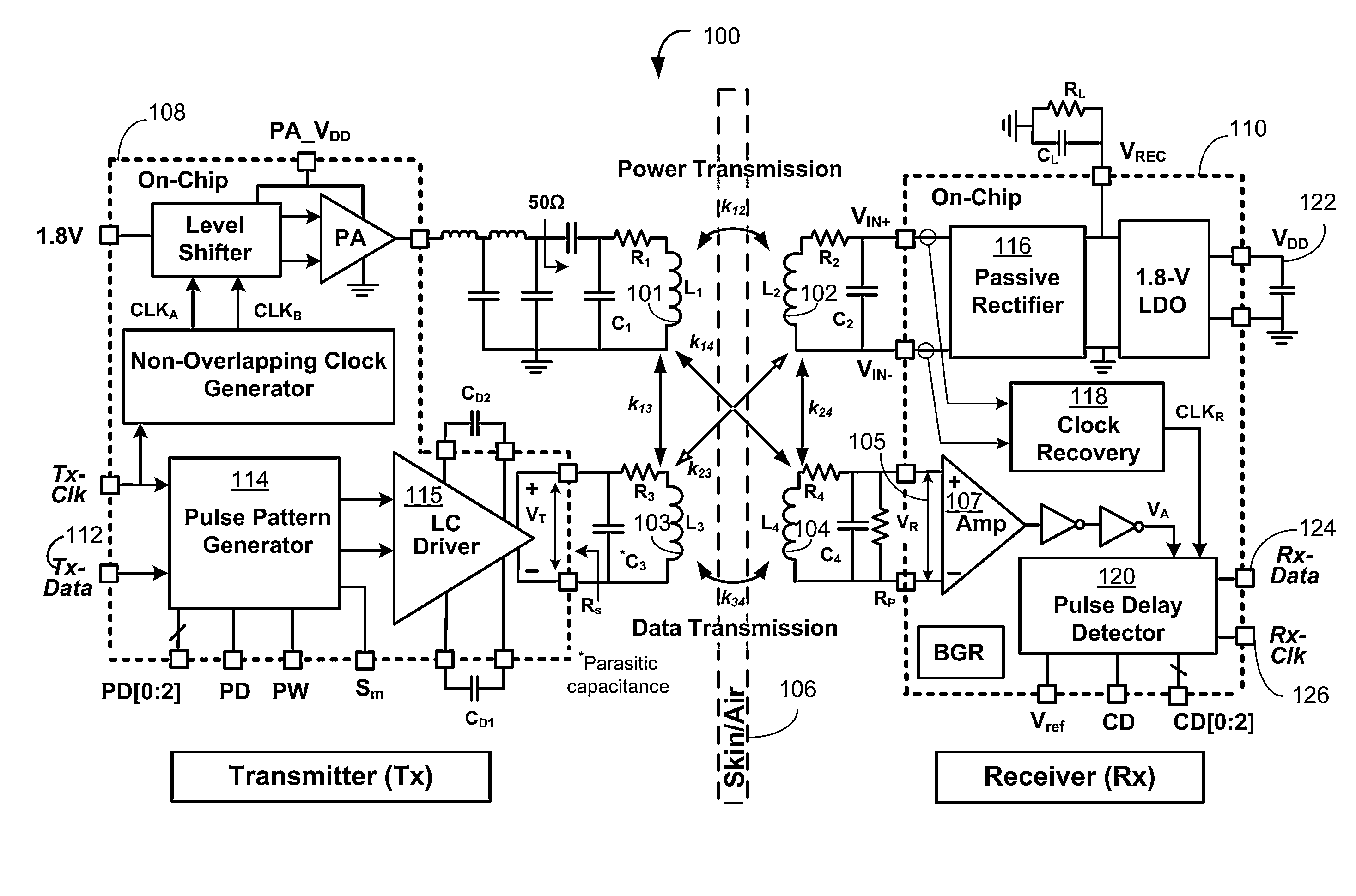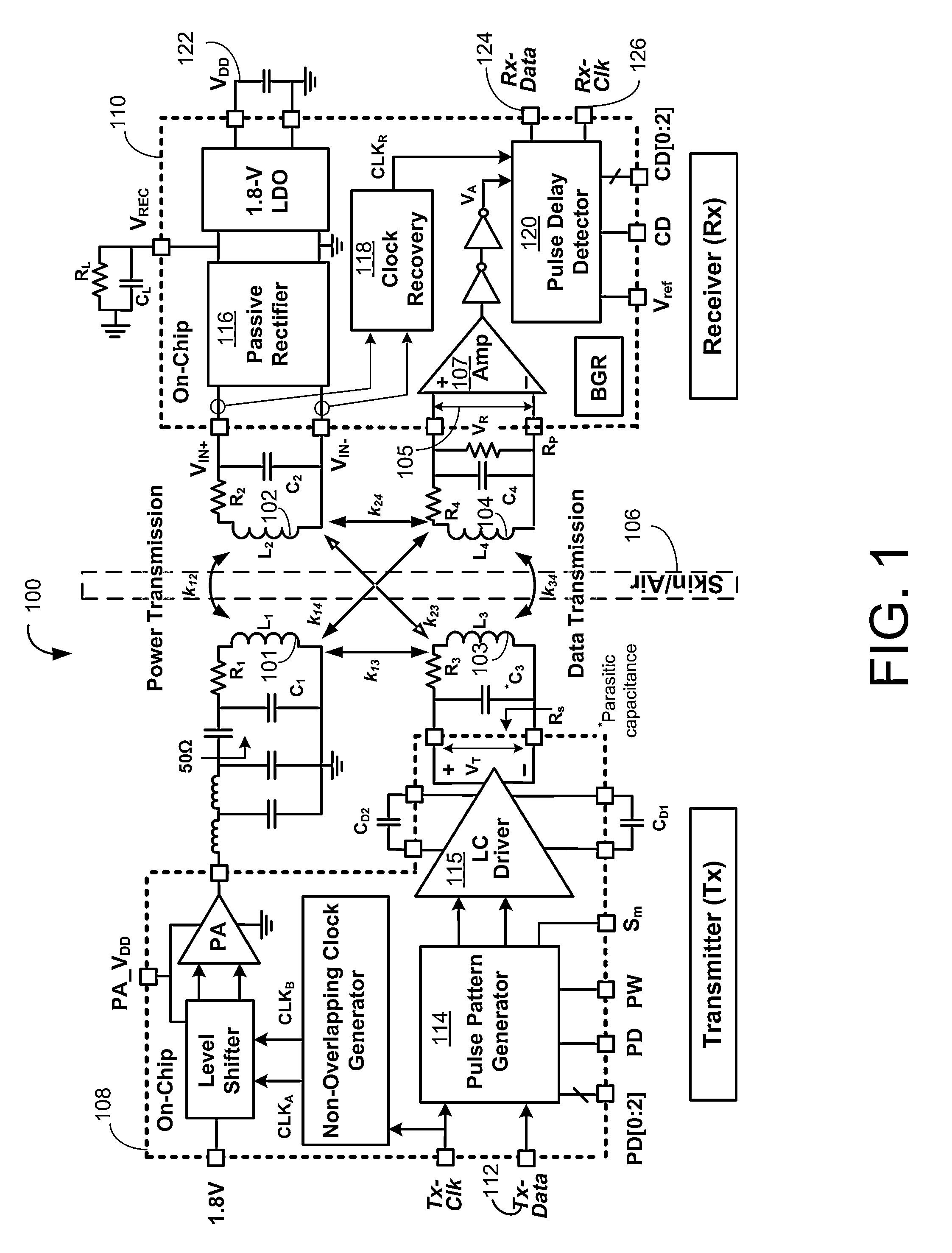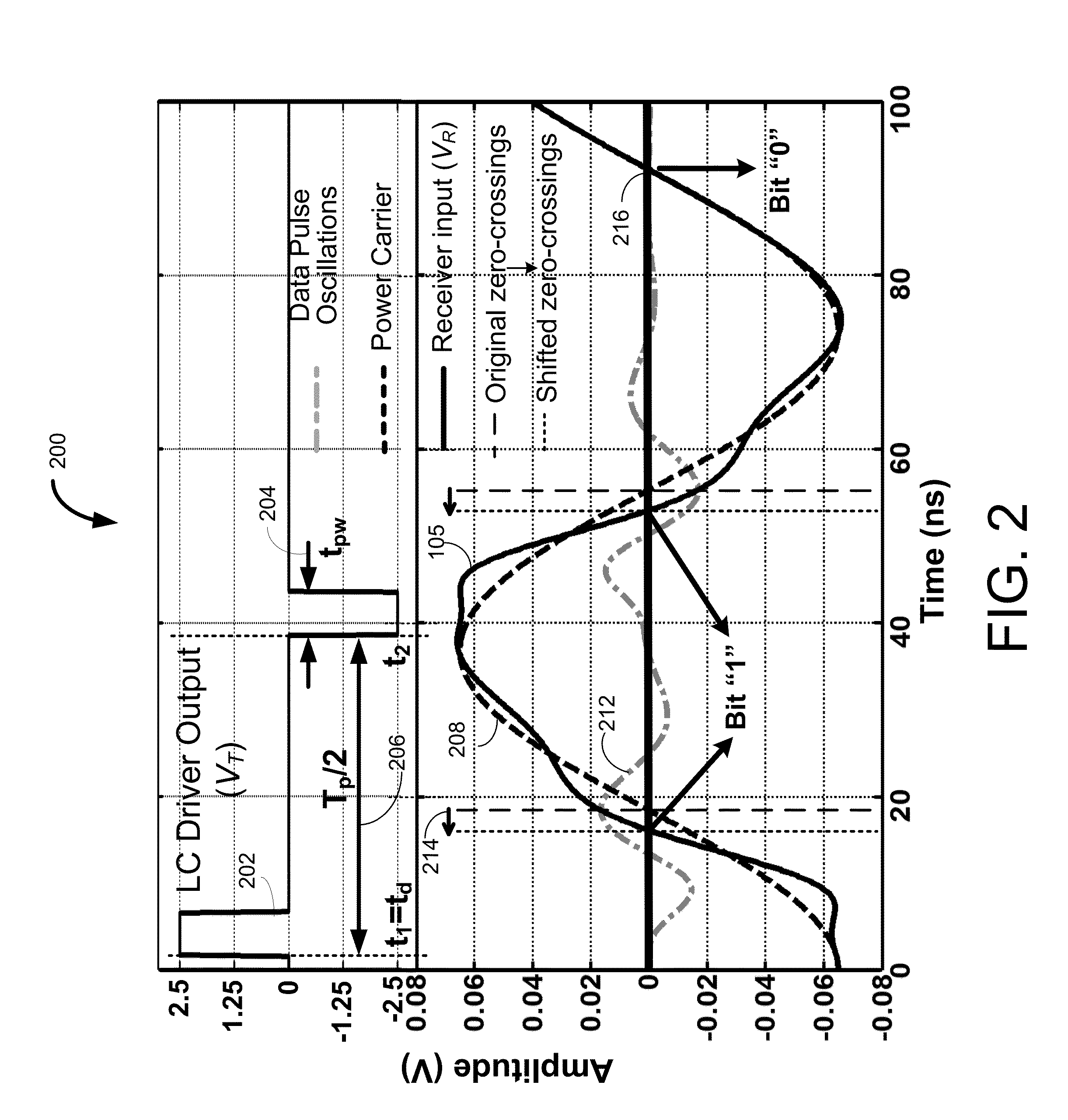Wideband Data And Power Transmission Using Pulse Delay Modulation
a technology of pulse delay and wideband data, applied in the field of inductive links, can solve the problems of limited space and power available, unsafe temperature elevation, and provide a limited data bandwidth of approximately 300 khz
- Summary
- Abstract
- Description
- Claims
- Application Information
AI Technical Summary
Benefits of technology
Problems solved by technology
Method used
Image
Examples
Embodiment Construction
[0039]Some implementations of the disclosed technology will be described more fully hereinafter with reference to the accompanying drawings. This disclosed technology may, however, be embodied in many different forms and should not be construed as limited to the implementations set forth herein.
[0040]Example implementations of the disclosed technology include systems, methods, and apparatus for wirelessly transmitting data and power across inductive links of a wireless transceiver (Tx-Rx) system using Pulse Delay Modulation (PDM) for near-field simultaneous data and power transmission. According to various example implementations disclosed herein, the unavoidable (and typically unwanted) crosstalk between power and data transmission is utilized to recover the data signal at the receiver (Rx). For example, and according various implementations, power and data transmission signals may be used to drive respective transmitter (Tx) coils at the transmitter side of the wireless transceive...
PUM
 Login to View More
Login to View More Abstract
Description
Claims
Application Information
 Login to View More
Login to View More - R&D
- Intellectual Property
- Life Sciences
- Materials
- Tech Scout
- Unparalleled Data Quality
- Higher Quality Content
- 60% Fewer Hallucinations
Browse by: Latest US Patents, China's latest patents, Technical Efficacy Thesaurus, Application Domain, Technology Topic, Popular Technical Reports.
© 2025 PatSnap. All rights reserved.Legal|Privacy policy|Modern Slavery Act Transparency Statement|Sitemap|About US| Contact US: help@patsnap.com



